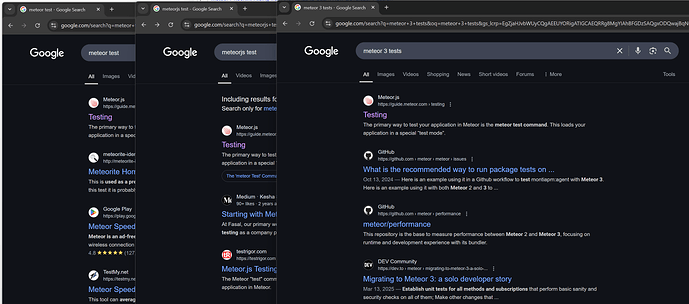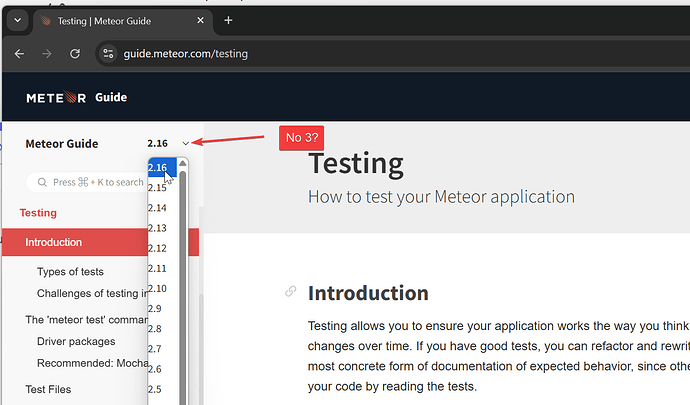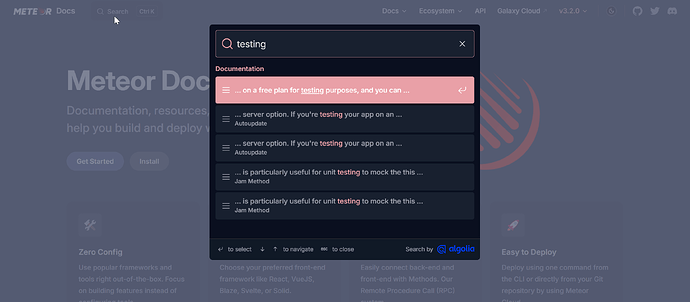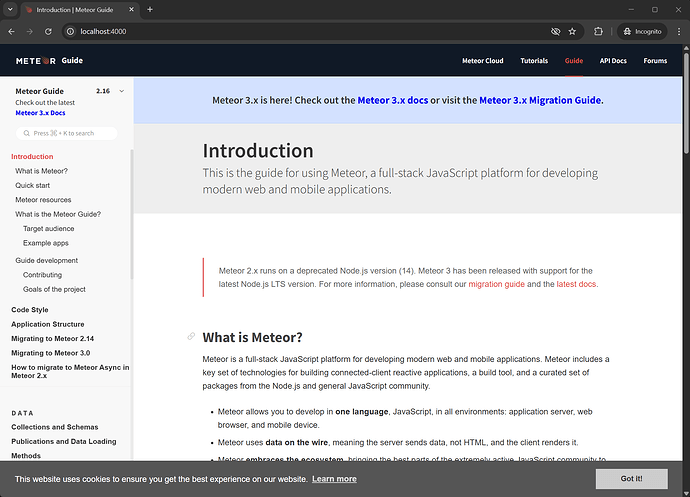I’ve been an avid Meteor user since its inception, and it’s no exaggeration to say Meteor has helped me build my businesses (like BlueHive and Ozwell.ai). For over a decade, I’ve also relied on it exclusively for personal projects. Needless to say, Meteor holds a special place in my dev-heart!
Meteor has evolved significantly, experiencing both growth and periods of uncertainty. As an organization, we’ve always encouraged our new interns and developers to dive into Meteor. But with the recent Meteor 3.0 release, we’ve noticed an uptick in confusion due to outdated docs, broken links, and general misinformation online.
Just recently, an intern asked: “Why push Meteor so hard? Everywhere I’m searching says people have left and it sucks…” Ouch!
Sadly, there’s truth to that experience. Common issues driving devs away from Meteor include:
-
Scaling & Performance Issues: Meteor’s default real‐time data sync (DDP + pub/sub) can strain apps at scale. Everything is realtime by default, which is overkill for many apps and makes scaling to many users difficult without careful optimization (Ask HN: Is Meteor.js dead? | Hacker News) (Ask HN: Is Meteor.js dead? | Hacker News). One developer noted Meteor “doesn’t scale well… great for proof-of-concept, but painful to scale,” due to DDP’s resource-heavy design (e.g. caching every client’s data) (Ask HN: Is Meteor.js dead? | Hacker News) (Ask HN: Is Meteor.js dead? | Hacker News). This led some early heavy users (e.g. community figure Arunoda) to move on, as Meteor was seen as hard to optimize for high concurrency.
-
Slow Build Times: As projects grow, Meteor’s rebuild times can become frustratingly slow. Developers have reported multi-minute rebuilds, which hurts productivity. In fact, Meteor maintainers acknowledged that “many people do complain about the build times and have stopped using Meteor because of this.” (Faster builds/rebuilds for development and production
 · meteor meteor · Discussion #11587 · GitHub) Long reload times (20–30+ seconds) disrupt development flow, especially compared to newer toolchains. Improving build performance is seen as crucial to winning back developers (Faster builds/rebuilds for development and production
· meteor meteor · Discussion #11587 · GitHub) Long reload times (20–30+ seconds) disrupt development flow, especially compared to newer toolchains. Improving build performance is seen as crucial to winning back developers (Faster builds/rebuilds for development and production  · meteor meteor · Discussion #11587 · GitHub).
· meteor meteor · Discussion #11587 · GitHub). -
Monolithic, “All-In” Architecture: Meteor has historically required going “all-in” on its stack (MongoDB, its build system, its realtime layer, etc.). This benefited rapid prototyping, but felt too inflexible for large projects. Developers worried that Meteor was “really monolithic” (The State of Meteor Part 1: What Went Wrong | Hacker News) – for example, swapping out parts was non-trivial. Early Meteor tied you to MongoDB; one commenter noted “with Meteor, it’s Mongo or nothing,” which deterred those who preferred SQL databases (The State of Meteor Part 1: What Went Wrong | Hacker News) (The State of Meteor Part 1: What Went Wrong | Hacker News). Before official SQL support, this hard MongoDB dependency was a deal-breaker for many, causing them to choose other solutions (The State of Meteor Part 1: What Went Wrong | Hacker News). Similarly, front-end was initially tied to Blaze (later alleviated by React/Vue integration). This tight coupling made some developers feel locked-in and wary of Meteor for long-term projects.
-
Complexity Beyond the Basics: Meteor is famously easy to get started with, but developers often hit a “learning cliff” as their app grows. Features like custom routing, fine-grained pub/sub management, pagination, server-side rendering, or handling complex data relations revealed steep complexity (Is React the Future of Meteor? - InfoQ). As one team put it, managing subscriptions and caching in Meteor took far more effort than expected, and “near the end of the project we realized none of us actually had a total mastery of what was going on under the hood…which was a terrifying realization.” (Is React the Future of Meteor? - InfoQ) In other words, Meteor’s magic can become a black box, making debugging and advanced use cases difficult without deep framework knowledge.
-
Stagnation and Community Concerns: Around 2016–2018, Meteor’s momentum seemed to falter, leading to a perception that it was “dying”. The core team (MDG) shifted focus to Apollo/GraphQL, leaving Meteor’s roadmap unclear. Users noticed key Meteor engineers and community leaders leaving and fewer updates. One long-time user returning in 2020 said “Meteor felt abandoned…the client side story was split (React vs Blaze), a bunch of the team moved on to Apollo, [and] all sorts of new frameworks…were getting popular.” (Why not Meteor in 2020? - Planet Earth - Meteor Forum) Missing modern essentials (like official service worker/PWA support) added to the feeling that Meteor was lagging (Why not Meteor in 2020? - Planet Earth - Meteor Forum). This uncertainty (fear Meteor might be deprecated) caused some to jump to more actively maintained stacks, despite fond memories of Meteor’s productivity. As a forum member noted, the lack of communication from MDG became “a constant source of FUD in the community.” (Some Exciting Meteor News - #79 by vlasky - announce - Meteor Forum)
-
Ecosystem & Tooling Gaps: In its early years, Meteor had a walled-garden ecosystem (Atmosphere packages, no npm support until Meteor 1.3). This meant popular npm libraries weren’t directly usable, which frustrated developers. Testing was another pain point: Meteor lacked good testing tooling for a long time, making it hard to adopt in enterprise scenarios. Some also critiqued Meteor’s use of global namespace and magic file loading, which could lead to tightly coupled code and difficulty modularizing (Is React the Future of Meteor? - InfoQ). While many of these issues improved over time (npm support, modules, etc.), the initial shortcomings left a negative impression on some developers.
Yet, despite these challenges, I still believe Meteor is one of the most powerful, productive, and delightful ways to build web apps—and I wouldn’t build without it. Also, many of these challenges either don’t exist, or have been improved in recent builds.
However, there’s still room for improvement. Two areas I’d love to see more focus on are:
1. Better Mobile & Desktop App Distribution:
One of the primary factors that drove me to develop in meteor is that it “works everywhere.” I was able to write my code ONCE and could deploy to web, desktop, and mobile without too much extra effort.
-
Mobile: Cordova has always been troublesome—any update or pause (like not working on an app for a few months…) usually breaks the build. Capacitor might be a modern alternative worth serious consideration. It has better maintenance, improved plugins, and easier workflows, making mobile app builds much less painful. Meteor’s roadmap already acknowledges potential Capacitor integration. I personally have not messed with Capacitor.
-
Desktop: Meteor-Desktop offers Electron-based builds but needs updating to catch up with modern Electron versions. Alternatively, exploring Capacitor’s Electron support or DIY Electron approaches might help keep Meteor relevant for desktop app distribution.
2. Versioning and Naming:
Numbers alone don’t tell the full story or generate excitement. Why not adopt a catchy naming strategy like Apple’s macOS big cats, Android’s dessert names, Ubuntu’s animal names, or WordPress’s jazz musicians?
Instead of “Meteor 3.0,” why not Meteor Phoenix - symbolizing Meteor’s powerful rebirth and resurgence. (just an example!)? Developers could easily Google “Meteor Phoenix Tutorial” or “Meteor Phoenix react tutorial.” It provides memorable, SEO-friendly identifiers that clearly communicate the excitement and evolution around new Meteor releases.
Main Series (Meteor 3.x):
-
Meteor Phoenix – symbolizing Meteor’s powerful rebirth and resurgence.
-
Meteor Comet – swift, powerful, leaving a lasting impact.
-
Meteor Aurora – highlighting the framework’s brightness and fresh appeal.
-
Meteor Nova – signifying explosive new features and major advancements.
-
Meteor Zenith – representing Meteor reaching a new peak of excellence.
-
3.1 “Meteor Nebula” – emphasizing a foundation of new improvements and the “birthplace” of innovation.
-
3.2 “Meteor Pulsar” – signifying performance improvements, reliability, and regular, rhythmic enhancements.
-
3.3 “Meteor Eclipse” – focusing on major changes overshadowing past challenges.
-
3.4 “Meteor Orbit” – highlighting stability, consistency, and smooth developer experience.
-
3.5 “Meteor Gravity” – emphasizing simplicity and ease of use, pulling developers naturally toward the ecosystem.
This thematic approach is memorable, engaging, SEO-friendly, and clearly communicates the excitement and growth in Meteor’s development journey.
We could also actively work on clearing outdated or confusing documentation:
- Audit old Stack Overflow posts and indicate clearly if issues were resolved in the latest Meteor release.
- Use Google Search Console to de-prioritize or remove outdated docs from search results.
- Consider server-side redirects on docs.meteor.com to guide visitors clearly to current documentation.
The goal is to give new developers an excellent first experience. If we solve their early confusion and show them how amazing modern Meteor is, they’ll likely become lifelong fans like myself.
What do you all think? I’d love community input and suggestions on how we can tackle these ideas and further support Meteor’s growth. Let’s help Meteor shine again!
-Will
p.s. Had AI help write some of this. I had little time to prepare but wanted to get this out to the world before heading to a work event next week. check out this ChatGPT 4.5 research on meteor… there is some gold hidden in there…



